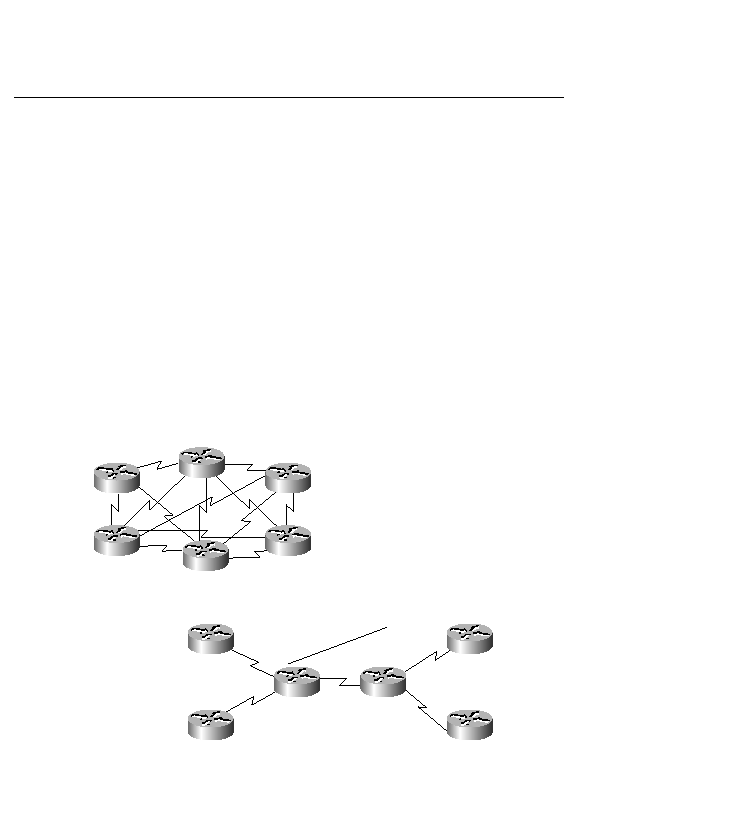
with RFCs 1434 and 1495. Then, a year or two later, IBM introduced RFC 1795 as the DLSw
standard. RFC 1795 is known as version 1. DLSw version 2 added some scalability
enhancements and is known as RFC 2166. Then Cisco developed its own flavor of DLSw called
DLSw+, which added even more enhancements to the protocol. The improvements made by
Cisco help with scaling, availability, and usability. DLSw+ can divide one large group of full-
meshed peers into smaller groups. This decreases overhead on the Cisco routers, as shown in
Figure 13-13. DLSw+ can also elect routers to speak on behalf of peer groups; these are known
as border peers. Border peers communicate with each other and represent a group of spoke
routers. Instead of having all the spoke routers talk to each other as a full mesh, as shown in
Figure 13-13, a spoke router talks to only its border peer. The border peer communicates with
the other border peer, and that border router updates its group of routers.